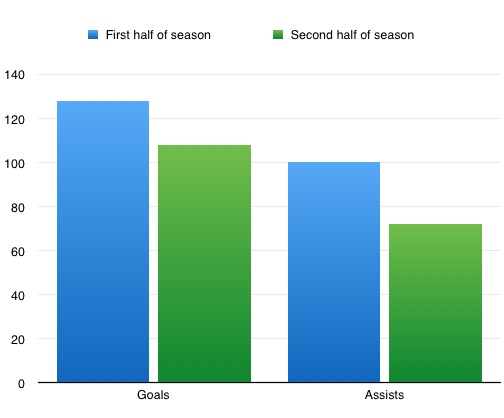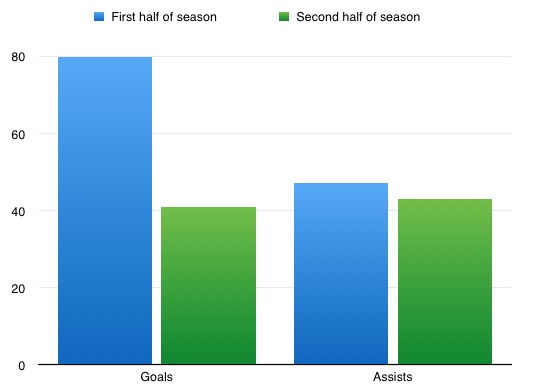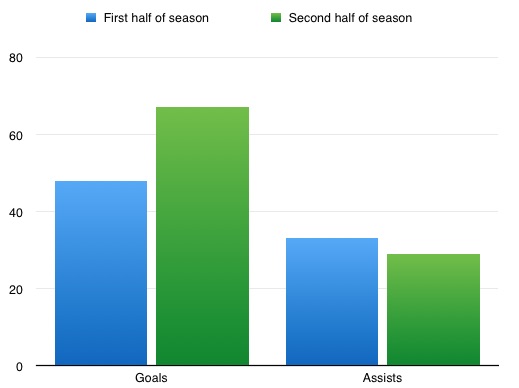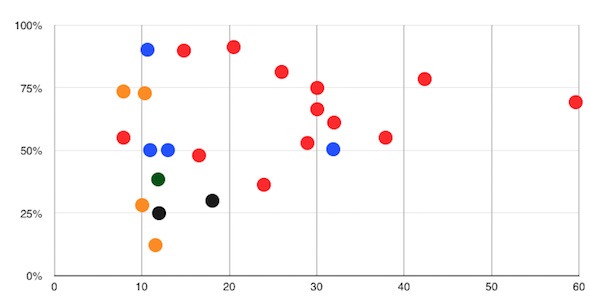Do the EPL’s La Liga imports fade away in the second half of the season?
Photo by Michael Regan/GettyTwo summers ago, Mesut Ozil joined Arsenal for a club record fee. The German was an instant hit at the Emirates. By the end of the season, however, he was regularly criticized by pundits.
Last year, Angel Di Maria joined Manchester United for a club record fee, and also made an immediate impact. By the end of the campaign, however, he couldn’t get in the side.
This slump in the second half of their debut Premier League campaigns doesn’t seem unusual for attacking players, particularly those signed at great expense from La Liga.
Is this dip in form a reality, or did the media “novelty factor” overrate their initial performances?
The statistics provide a clue as to the answer.
The most decisive individual football statistics for attacking players remain the two simplest—goals and assists.
Therefore, to find an appropriate selection of players who can be judged by simple numbers, this survey exclusively features forwards and attacking midfielders signed by Premier League clubs in the past five summers. The idea is to ascertain whether big-name imports faded in the second half of their debut campaign.
Because the list of imports signed in the past half-decade runs into the hundreds, and this is about evaluating the impact of big-name players, the survey features only players signed for £8m or more. Clubs paying around £8m—the price of Rafael van der Vaart, for example—usually expect instant results.
There were 47 attacking players signed from abroad by Premier League clubs in the last five years for transfer fees in excess of £8m.
The final step was to apply some level of quality control, which means the player needed to record 10 (combined) goals and assists in their debut campaign. Any less than that, and we’re not really dealing with the right type of player: Ricky van Wolfswinkel recording 100% of his two scoring contributions (one goal, one assist) in the first half of his debut season, for example, is fairly meaningless. We need a decent number for this to be statistically significant, and double figures seems the logical qualifying numbers, weeding out the flops.
Then, we’re left with 25 players:
-

-

-

-

-

-

-

-

-

-

-

-

-

-

-

-

-

-

-

-

-

-

-

-

-

-

-

-

-

-

-

-

-

-

-

-

-

-

-

-














































